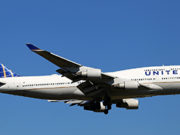Aircraft operations in the United States will increase more than 25 percent over the next 20 years, according to projections by the U.S. Federal Aviation Administration (FAA).
The FAA Aerospace Forecast, Fiscal Years (FY) 2019–2039, released in late April, said that U.S. carrier domestic passenger growth will average 1.8 percent per year between fiscal 2019, which ends Sept. 30, and fiscal 2039, which will end Sept. 30, 2039.
Revenue passenger miles (RPMs) are expected to increase 2.2 percent a year over the same period, the report said, adding that the forecast calls for domestic RPMs to increase 1.9 percent a year and international RPMs, 3 percent a year.
“Fundamentally, over the medium and long term, aviation demand is driven by economic activity, and a growing U.S. and world economy provides the basis for aviation to grow over the long run,” the report said.
Despite the optimistic forecast, the report added that “some headwinds … remain,” including the uncertainty over Britain’s planned exit from the European Union and the difficulties faced by China in managing a slowdown in its economy. Other potential problems include a slowdown in global trade, political tension in some countries and economic issues in Italy and Germany.
The forecast also said that available seat miles (ASMs) would increase along with increases in passenger demand.
“The number of seats per aircraft is growing, especially in the regional jet market, where we expect the number of 50-seat regional jets to fall to just a handful by 2030, replaced by 70- to 90-seat aircraft,” the report said.
The forecast, which focused on economic factors, said that profitability for U.S. air carriers should remain the same or increase, “as solid demand fed by a stable economy offsets rising energy and labor costs.”
The report added, “Over the long term, we see a competitive and profitable aviation industry characterized by increasing demand for air travel and airfares growing more slowly than inflation.”
As regional and business jet fleets grow and as air carriers consolidate operations in their hubs, workload is likely to increase for air traffic controllers, the report said.
“Operations at FAA and contract towers are forecast to grow 0.9 percent a year over the forecast period, with commercial activity growing at five times the rate of noncommercial (general aviation and military) activity,” the report added.
